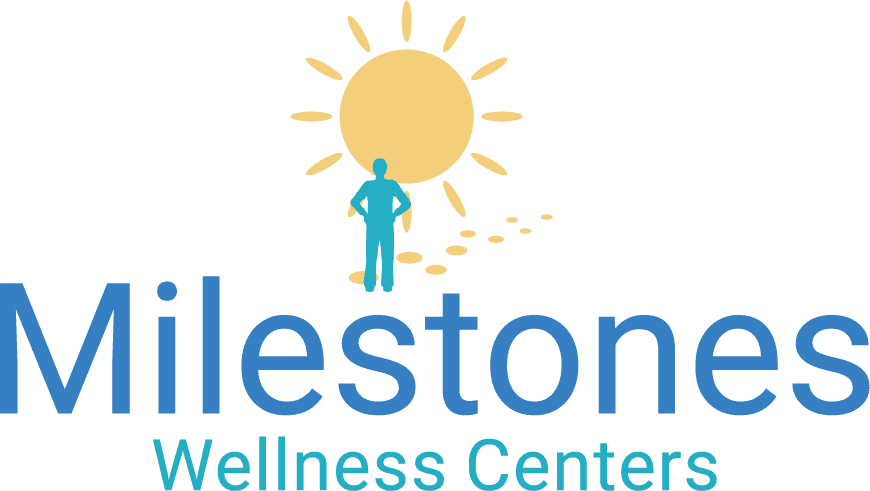Physical Indicators of Opioid Abuse
There are both physical and behavioral indicators that an individual is abusing opioids and/or opiates. As we discuss this topic it is important to understand that as many individuals will show some if not all the indicators listed, they could come from other areas of life, other substance abuse, or due to other factors such as physical or psychological disorders. This is just a framework to provide some reference to understand what the common indicators that a person is abusing opioids and/or opiates. The difference between opioids and opiates is that opioids are semi-synthetic or fully synthetic substances and opiates are natural substances, besides that they have similar effects on the body and brain.
The physical indicators of opioid abuse are some of the easiest to first notice. As many individuals are prescribed opioids if taken as prescribed the following physical indicators should not be present. Even if a person is taking their medication as prescribed, combining that medication with other substances and/or alcohol would change the effects of the medication and would be considered as abuse. The reason for listing this as abuse is that the combination of the medication with other substances and/or alcohol would be to intensify the effect of the medication which is then not using the medication for its intended purpose.
When it comes to opioid abuse, identifying someone that is intoxicated with the substance is not as easy as many may think. Such as that with alcohol, it is often very apparent that an individual is overly intoxicated as well as they will often smell of alcohol on top of the slurred speech, lack of coordination, confusion, etc. One of the main physical components of intoxication from opioids and/or opiates is that of constricted pupils. This means that the pupils are very small (some call this pinpoint size) despite the quantity or intensity of light. A person’s pupils naturally will only highly constrict to bright light or to a near fixation on an object. Therefore, if under normal circumstances a person has greatly constricted pupils there is a great chance that they are currently intoxicated with opioids and/or opiates. It does not take a large amount of the substance to cause this pupil restriction. And no other substance will cause such a restriction of the pupils as most other substances cause pupil dilation (making the pupils greatly larger).
The second most easily noticed physical indicator of opioid and opiate abuse is a loss of consciousness. This is most commonly called “nodding off”, which is the involuntary loss of consciousness even while sitting or standing. Often people will go through this with short stents of waking, such as jerking back upright. This can be seen with other substances or from being extremely exhausted. However often when someone is at such a level of exhaustion, they will have a brief encounter of such behavior but just drift asleep. Benzodiazepines are also noticed to have such “nodding off” effects on people, which again would only happen at a period of abuse of the substance. Many individuals that abuse opioids and/or opioids often abuse benzodiazepines (Xanax, Klonopin, etc), which together is a potentially fatal combination. Other physical indicators of opioid abuse could also relate to other abuse of other substances. Regardless of if noticing these other physical indicators concern should be taken for the welfare of the individual. Slowed breathing is common with opioid abuse, but as well as abuse with benzodiazepines. Confusion is another common indicator, but this can be seen with many potential substances, even including marijuana, which is now legal in some means in many states.
Behavioral Indicators of Opioid Abuse
There are many potential behavioral indicators of opioid and/or opiate abuse. For all these reasons it is very important to note that these more align with substance abuse in general as many of these indicators align across the realm of addiction. But if you match these with some of the more specific physical indicators for opioids and opiates listed above, can assist you in understanding if it is directly related to opioids and/or opiates. Increased secrecy is a common behavioral indicator of substance abuse as the person will want to hide this part of their life from those that are not also in active addiction. Another behavioral indicator can be intense or excessive mood swings by the individual. This often reflects stages of intoxication and withdrawal as well as the behavioral changes that come along with intoxication from a substance. Not all substances have withdrawal symptoms of which opioids and opiates have some of the most severe withdrawal symptoms. During times of physical withdrawal, the individual will be in great physical discomfort and can cause some intense emotions, especially surrounding any circumstance that involves them alleviating such symptoms. Some of these scenarios can be borrowing money, needing a ride (usually to obtain the substance), or anything that would assist them in obtaining more of the substance to cease the withdrawal.
Individuals in active addiction often withdrawal from friends, family, and other obligations such as social events as well as have difficulties with employment or education. As this is not always indicative of substance abuse, this is very common with those in active addiction. Another behavioral indicator of opioid and/or opiate addiction are some of the items you will notice in that person’s possession. Needles and spoons are common indicators of intravenous drug usage. As for the spoons you will notice that they are charred from being heated and often bent at a 90-degree angle around the base of the spoon. Rubber tubing is also common of those using intravenous drugs as that is used to tie off a limb to assist in finding a vein. Other items that can be indicative of substance abuse would be an excessive amount of pill bottles, and especially pill bottles that are in another person’s name or have the labels removed or altered.
How Opioids Hijack Brain Functioning
In understanding signs and symptoms of opioid addiction it is important to understand how a person goes through the cycles of addiction and how the substance can alter brain functioning. First to look at the brain functioning. Opioids and opiates work on the brain by activating the MU opioid receptor sites. It is during this process they cause a release of the neurotransmitter of dopamine. As the individual continues to take the substance the brain stops producing the endorphins which naturally attach to the MU opioid receptor sites and the body’s natural production of dopamine is decreased. Dopamine plays an important role in our brain in that it helps with the variety of functions, but the main ones are the feelings of pleasure, satisfaction, and motivation. Obviously, the feelings of pleasure and satisfaction are something we all desire, therefore that starts the addiction and continues to feed it as it requires the opioids and/or opiates to receive such feelings.
The Cycle of Addiction
To understand the cycle of addiction it is important to also understand the stages of change a person will go through in addiction. This model is called the Transtheoretical Model or also referred to as the Stages of Behavior Change. This model is going over the stages of intentional behavior change, and the person can easily repeat this process multiple times. To assist those working through their addiction it is important to understand the common stages that a person will go through during their recovery and any potential setbacks, relapses, and repeated attempts at recovery. As we do hope that everyone seeking assistance with their addiction whether to opioids and/or opiates or any other substance of addiction is successful, realistically it can take many attempts if they are ever successful at sustained recovery.
The first stage is the Precontemplation Stage. It is in this stage that the individual has zero intention of changing their behaviors and there is no awareness of any behavioral problems. Many would look at this stage as the person being in denial of the behaviors they are exhibiting. If brought to the person from outside sources that they had an addiction problem, the person would deny this and often downplay the behavior. As stated, there is no awareness at this stage, the person would likely even be unaware that they are fully addicted to the opioids and/or opiates. Sometimes this realization may not happen until some severe withdrawal symptoms have been suffered for this realization to come into play, and even this may not be enough for the realization of the situation to happen.
The second stage is the Contemplation Stage. During this stage the individual is aware that a change in behavior needs to happen. It is at this point that the person will start to make some soft plans for the change to happen. As they have started planning, they have not committed to the change, it is more of a light thought in the back of their mind. This is a huge step for anyone suffering from substance use disorder, regardless of the drug of addiction, as this is the start towards recovery and seeing an issue is at hand. The third stage, which is the Preparation Stage is where the commitment to change is finally seen. During this stage true planning takes place. As there was some light mental planning in the Contemplation Stage, it is now that the person will start learning about recovery options. They will start to research options for treatment and what is needed to overcome the addiction they have been suffering from. This shows a true commitment and desire to follow through with the behavior change. It is important to understand that at any point during the stages of change that a person could regress right back into active addiction and back to the Precontemplation Stage.
The fourth stage is the Action Stage. As the name implies, this is the stage in which the person will implement the modifications in life to change the behavior. In addiction, this often means treatment, but some may believe that just life changes can help with recovery. And that is at times correct, but those who seek professional help and with opioids and/or opiates the use of medications to assist with withdrawal and cravings, have greatly higher success rates. It is during this stage as well as some in the Preparation Stage that the person with an addiction will need support. Their support will vary, but emotional support is crucial. They often may need someone to assist with helping them find treatment, rides to treatment, other resources to assist them in recovery. It is common that at this point the individual has done a lot of harm and caused distrust by others and therefore asking for assistance may not be easy for the individual or they are met with resistance.
The fifth stage of the Transtheoretical Model is the Maintenance Stage. This stage is the part where the individual is maintaining the behavior change and trying to prevent the termination of the changed behavior. For many that suffer with addiction this maintenance stage is essentially the rest of their life. At all points they are trying to not go back down the path of active addiction. Unfortunately, this does happen to some, and the process starts all over. As this is a lifelong stage, it does get easier with time and with more passed time the urges to use should get less and less. However, it is important to be cognizant that there will always be times in which this can be hard to maintain and that is where social support is crucial.
The final stage is the Termination Stage, in which there is a failure to maintain the intended behavior. Some may call this the Relapse or Lapse stage. This is where there are a lot of different individual views of the termination of the changed behavior. Some believe that there is only relapse and others believe in a lapse. Relapse is usually viewed as a move back into active addiction. Some view a lapse as a single event or limited number of events of substance usage with a quick return to working towards recovery and being in abstinence. Also, individuals may enter and exit this model of change and any stage, just because of a lapse or relapse does not mean that a person can not immediately or quickly go through stages and back into the action and maintenance stage. There are a lot of individual differences with how the stages will last, but the framework of this model is important to understand.





